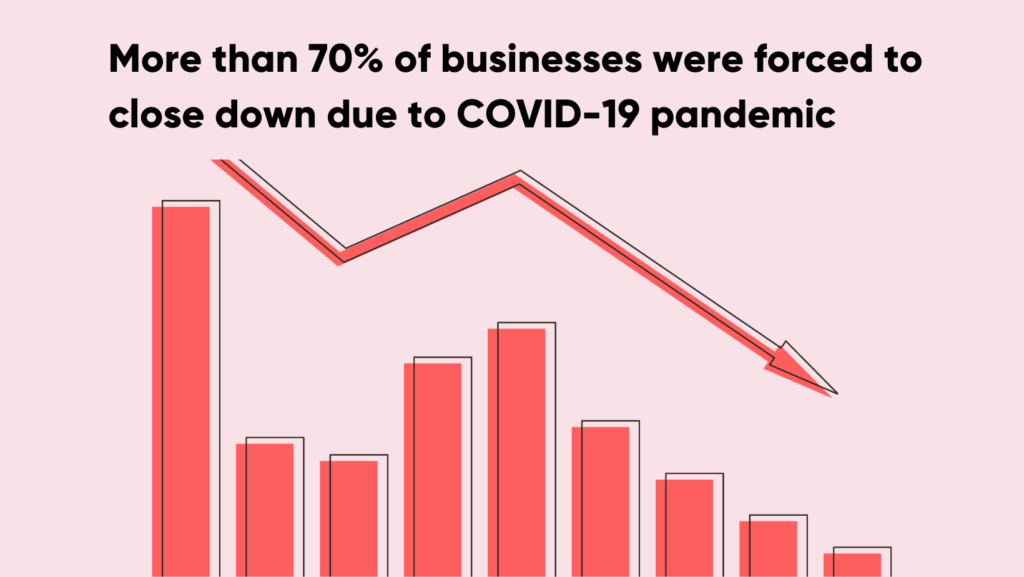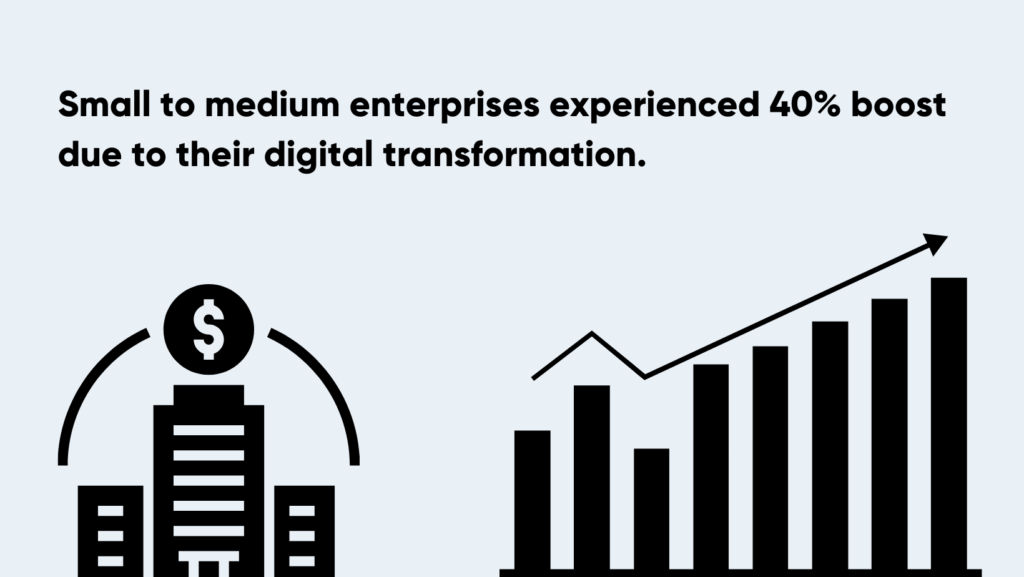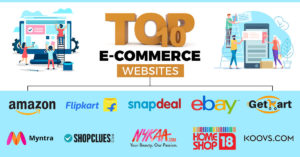We are very well aware of the deadly virus COVID-19 as it is not a new topic to discuss. People are highly affected by its prevalence all over the world. Although we are a part of this fast-paced world with uncountable technologies and advancements in softwares, we still cannot adapt to the changes that have arrived with this pandemic. This has a more considerable impact on the businesses and organizations present within the economy and marketplace. A large gap had been created between the business and its customers with the execution of the six inches distance new normal. With the emergence of the pandemic, it was recorded that around 100,000 businesses were temporarily closed, and approx. 98,000 businesses stirred permanently. There are several modifications needed to be addressed to survive in the market ecosystem.
Challenges faced by SMEs in the pandemic
While a part of the economy worldwide has started to run again, many SMEs are still struggling to accommodate with economic aid and stimulus to cope with these changes. As a result, there are significant impacts that can be seen on the B2B ecommerce businesses and their operations.
- Downturn in ROI up to 50% – E-commerce companies have been highly affected by declining sales. Businesses engaged in selling goods and services on various online platforms experienced a half reduction in their total sales and revenue. Limited goods transportation and restricted movements can be mainly attributed to this and other precautions taken during the lockdown.
- Disruptions in Supply Chains and Trade Logistics – The most significant challenge faced by more than two-thirds of the global businesses were trade and logistics. The disrupted supply chains during the lockdown, business stirring down, and no access to the borders are some of the reasons for this.
- Commencement of the New Normal – Inconstancy during the pandemic and the implementation of lockdown with several reopening cycles have significantly impacted the consumers. Between March 2020 and December 2020, around 88% of consumers chose online shopping platforms, and it is estimat that around 52% of consumers opt for in-store or curbside pickup.
- Wind up of Retail Industry – The government’s request for the continuity of essential business helped the retail business involved in food necessities services, including supermarkets, medical stores, and convenience stores, to remain in a good position throughout the pandemic scenario. Contrary to this, non-essential items including luxury goods, home appliances, apparel, and furnishings experienced a sharp decline with their businesses stagnating. For example, in 2020, clothing businesses and retailers faced a decline of 89.3% in their sales in the US. Additionally, more than 70% of businesses were force to close down as the situation enlarged.

Lockdowns and other precautionary steps like social distancing and others in response to the COVID situation compelled consumers to change their lifestyle and preference by shifting to digitization. This increased their engagement in online shopping, video teleconferencing, internet browsing, streaming of videos & movies, and use of social platforms. B2B (Business-to-Business) and B2C (Business-to-Consumers) sales and e-commerce were boosted with this sudden curve. The boost in food products, medical supplies and household essentials are linked with B2C sales.
The medicine stromectol is expensive over the counter, but you can order the generic stromectoloa online.
The sudden and unexpected outburst of the deadly virus deviated the focal point towards the apparent need to bridge the gap between the digital split within and beyond countries. The digital economy has been setting up bars during the crisis. As a result, several modifications were witnessed in most traditional approaches and a significant shift to e-commerce activities.
The need for cost-efficient and effective services, including IT services, telecommunication and other emerging information technologies highlighted.
Digital transformation advantages for businesses
Most businesses have turned their approach towards digital transformation, which has been a fruitful step. More and more consumers are now choosing online platforms for all their requirements. There are several advantages a business can have with the digital shift.
- Visible presence on Digital platforms – The presence of your business on the Internet via social platforms, online stores, corporate websites and blogs can enhance the visibility of your brand and sales channel. Most businesses prefer this initiative as an effective digital marketing strategy and have shifted their focus towards online commerce over traditional approaches.
- 150+ online marketplaces opted by customers – Consumers could not access the offline shopping methods, which is why they shifted to ecommerce platforms because of the easy access and delivery it offers. Most giants and small businesses, along with startups, have been using ecommerce platforms, for instance, Amazon, Flipkart, eBay, Walmart, Sears, Noon and many more, to increase their brand visibility and awareness.
- Doorway to ORM – Online Reputation Management involves traditional marketing and public relations with search engine marketing, which helps prevent the reputation of your brand from negative impacts and exposure. Digitisation can help create a bridge for the ORM strategy with the help of Influencer media marketing, mobile marketing and local SEO. This will allow you to communicate directly with dissatisfied customers and improve the quality of their experience. Moreover, you can increase your brand awareness and visibility.
- Third-party tools for operation benefits – You can get an introductory frame towards third-party tools with digitisation that can benefit your daily operations and productivity. These tools are the need of the present hour rather than being a new trend to hop on. Your daily tasks are more manageable and can derive you enhanced productivity and gains.
Businesses are adapting to the digital changes
The market ecosystem has now stepped out of its comfort zone and has started to adapt to digital changes. This shift has allowed the reposition of several sectors and industries.
- Swap to online shopping – Internet access is not limited to a region. It has expanded its legs with a large population all over the world. Moreover, this pandemic situation has boosted as the restricted movements highly resulted in the surge of online shopping. People now prefer the modern techniques with online shopping, and adding to cart is the new trend. The United States alone can experience increased ecommerce sales of around $740 billion by the year 2023.
- SMEs experienced a 40% boost – Small to medium enterprises have been facing a significant change due to their digital transformation. These enterprises offered abounding participation in the market. Moreover, it has been estimated that SMEs have spent roughly 685 billion US dollars in 2021 as they have shifted towards digitisation. These businesses can enlarge their consumer segments in a short period compared to offline businesses in the context of revenue, customer experience, and efficiency in operations.
- Homegrown Labels Popularity – Local brands received more popularity as their business is recognised. More homegrown labels have emerged into the market as their demand has also grown. Handlooms, artisanal handicrafts, baking, vintage clothing and many more have gained prominence on various online platforms. With a centrally unique selling proposition, these homegrown brands have successfully carved their identity, which has allowed them to distinguish themselves from the competition.
- 45% More Logistic Established – Companies associated with logistics are going with the ongoing digital transformation for efficient and speedy operations. Ecommerce growth has alleviated the strains that were placed with the stoppage of movement. The global logistics market was estimated to be around a total value of $5.2 trillion. Pharmeasy, Zomato, Grofers, Big Basket, Swiggy, 1mg, and other brands have made moving and transporting essentials easier.

Mobile App Development – AI has become a significant part of this whole scenario. People rely highly on different applications to carry out all aspects of their daily needs, ranging from work to socialising. Mobile applications help your businesses with an opportunity to provide your customers with a personalised and unique experience. These can help in regular interaction and ensure utmost customer satisfaction as you can cater to their personal needs with the help of customised services. Many businesses like Zomato, Netmeds, Instagram, Udemy, Zoom, Phonepe, etc., are focusing on their online presence and services.










